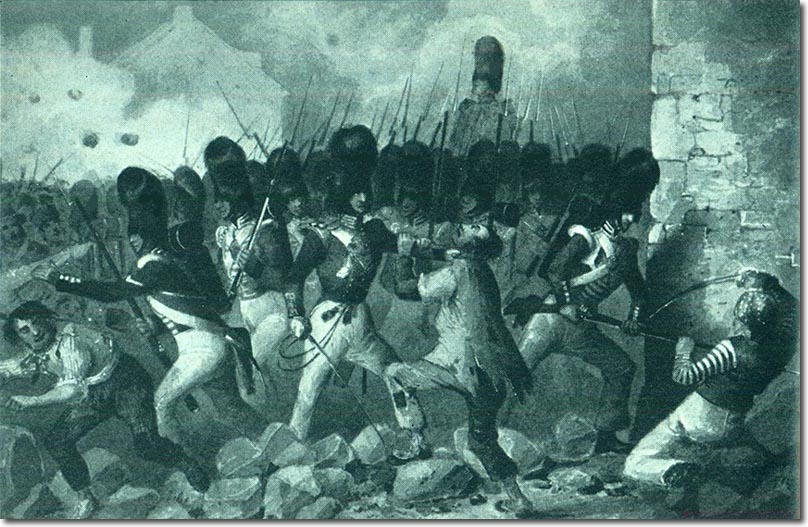|
|


|
| This print by M A Hayes depicts the Royal Fusiliers carrying out riot control with fixed bayonets and dress uniform c1840-50. The CO directs operations from his horse while a more junior officer seizes a ragged individual by the throat. In the early 19th century the Act of Union caused much resentment against England. Daniel O'Connell the Irish politician worked towards repealing the Act but the Catholics felt oppressed by the Protestants so that outbreaks of violence became more frequent. Sectarian violence was especially common in Ulster, the riot at Dolly's Brae being the most well known. The Tithe War in the 1830s came about when Catholic peasants were obliged to pay tithes to the Protestant Church. Land enclosures for cattle rearing caused a reduction in the size of smallholders plots and potato growing became the only way to sustain a family. But when the potato blight spread through Ireland in 1845 there was widespread famine. The British government were unresponsive and appeared to the Irish to be unsympathetic thus resentment increased even more. A group called the Irish Confederation launched a rebellion against British rule in 1848 while the famine was still at its height. Military action suppressed this, and their leader William Smith O'Brien was captured and transported to Tasmania. |
Armed Forces | Art and Culture | Articles | Biographies | Colonies | Discussion | Glossary | Home | Library | Links | Map Room | Sources and Media | Science and Technology | Search | Student Zone | Timelines | TV & Film | Wargames